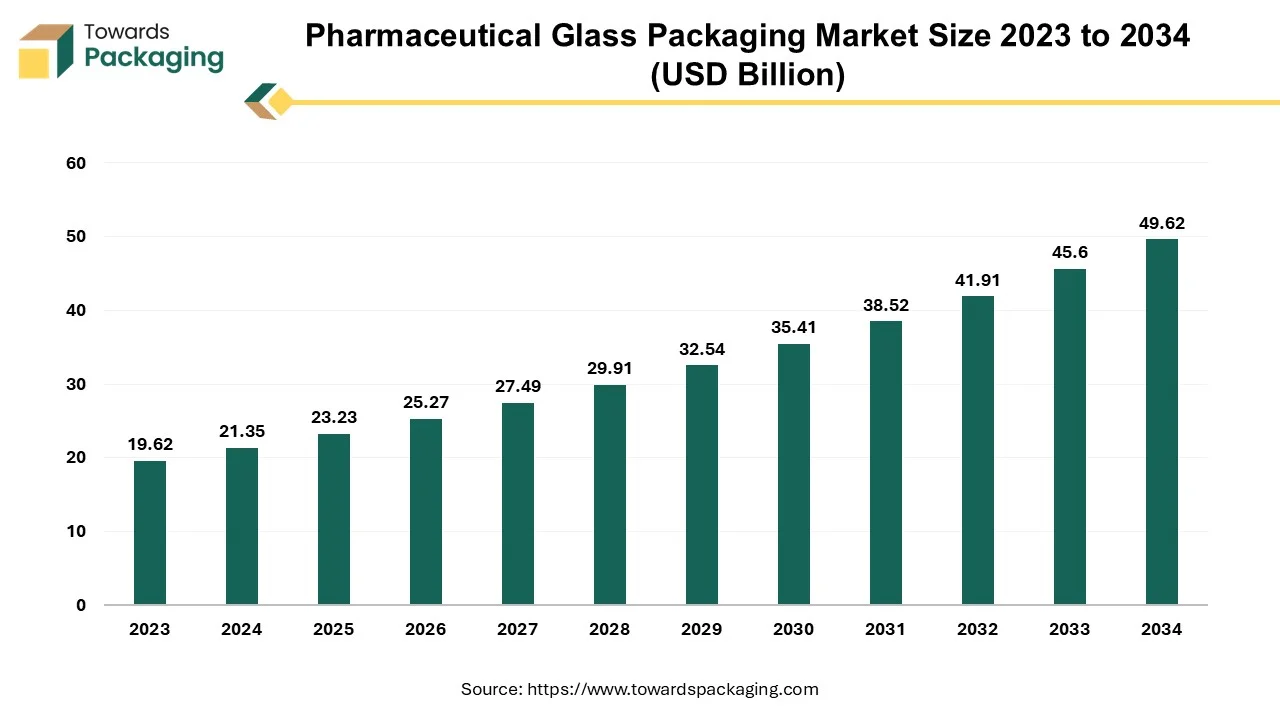Growth and Outlook of the Pharmaceutical Glass Packaging Market (2023 – 2032)

Key Drivers of Growth:
- North America’s Role: The pharmaceutical glass packaging market is seeing expansion in North America, driven by increasing demand for secure, reliable packaging solutions.
- Asia-Pacific Surge: The Asia-Pacific region is experiencing rapid growth in pharmaceutical glass packaging, with rising demand across emerging markets.
- Importance of Glass Vials: Pharmaceutical glass vials are essential for packaging due to their flexibility and ability to maintain drug integrity.
- Glass Packaging for Generic Drugs: Glass plays a critical role in ensuring the accessibility and quality of generic drugs, supporting widespread healthcare access.
- Growing Distribution Channels: The rise in pharmaceutical distribution networks is driving the demand for glass packaging solutions.
Why Glass is a Preferred Material:
Glass has been the material of choice in the pharmaceutical industry for years due to its unique properties. Its chemical stability and inertness make it ideal for storing medications in solid, liquid, injectable, or reconstitutable forms. Glass ensures the purity and integrity of medicines, even when exposed to other compounds. It also withstands temperature fluctuations, which is critical for maintaining the stability of pharmaceutical products during processes like sterilization, freezing, or freeze-drying.
For sensitive pharmaceuticals, amber-colored glass is used to minimize light exposure, preserving the quality of the medication. Packaging companies typically start with glass tubes, which are then heated and shaped into vials, undergoing further processing to ensure strength and stability.
Environmental Sustainability and Innovation:
An emerging trend in the industry is the use of recycled glass, with a focus on producing specialty glass that meets pharmaceutical standards. The recycling process involves advanced chemical and mechanical methods, contributing to a more sustainable production cycle. Additionally, new low-emission furnace technologies are being developed to reduce the environmental impact of glass manufacturing.
Recent Industry Developments:
- In January 2024, TricorBraun, a global packaging leader, acquired Glassland, a supplier of glass packaging, expanding its reach in Europe. This acquisition strengthens TricorBraun’s position in the pharmaceutical glass packaging sector through its premium division, Vetroelite.
Pharmaceutical Glass Packaging Trends:
- Glass remains the preferred packaging material due to its ability to maintain drug stability and effectiveness over time.
- There is growing demand for specialized glass containers tailored to unique pharmaceutical applications and formulas.
- The pharmaceutical industry is increasingly focusing on the use of eco-friendly packaging materials, aligning with sustainability efforts.
- The strength, purity, and chemical resistance of glass are becoming more important to pharmaceutical companies, further driving the material’s use.
Amber Glass as a Sustainable Solution:
Amber glass is gaining popularity in the biopharmaceutical industry as an eco-friendly alternative to plastic containers. The process of creating amber glass involves melting iron, sulfur, and carbon to give it its distinctive dark color, which effectively protects contents from UV light. Major biopharmaceutical companies in the US, such as Johnson & Johnson and Pfizer, are using amber glass to package medications, including injection vials and ampoules.
Market Dynamics:
- Demand: Pharmaceutical glass packaging ensures the safety, effectiveness, and integrity of products, offering a non-reactive barrier against external contaminants like light and moisture.
- Restraint: The cost of pharmaceutical glass packaging, particularly premium borosilicate glass, is higher than alternatives such as plastic or polymers, which could limit market growth.
- Opportunity: Innovations in glass packaging technologies present opportunities to improve product performance, enhance functionality, and deliver a better user experience, further driving demand.
Our Table of Content (TOC) covers key healthcare market segments, materials, technologies and trends—helping you navigate market shifts and make informed decisions: https://www.towardspackaging.com/table-of-content/pharmaceutical-glass-packaging-market-sizing
Access exclusive insight now @ https://www.towardspackaging.com/price/5161
We’ve prepared a service to support you. Please feel free to contact us at sales@towardshealthcare.com
Web: https://www.towardshealthcare.com
Visit Dental Specifics: https://www.towardsdental.com
Get the latest insights on industry segmentation with our Annual Membership: Get a Subscription
For Latest Update Follow Us: https://www.linkedin.com/company/towards-healthcare